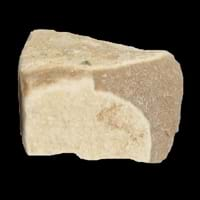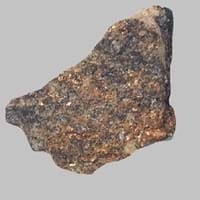Mudstone and Adakite
Definition
Definition
Mudstone is a fine-grained, dark gray sedimentary rock, which is formed from silt and clay and is similar to shale but has less laminations
Adakite is an intermediate to felsic volcanic rock that has geochemical characteristics of magma which is said to be formed by partial melting of altered basalt that is subducted below volcanic arcs
History
Origin
Unknown
Adak, Aleutian Islands
Discoverer
Unknown
Defant and Drummond
Etymology
From the English mud and stone, from low German mudde and stainaz
From Adak, Aleutian Islands
Class
Sedimentary Rocks
Igneous Rocks
Sub-Class
Durable Rock, Soft Rock
Durable Rock, Medium Hardness Rock
Family
Group
Not Applicable
Volcanic
Other Categories
Fine Grained Rock, Opaque Rock
Fine Grained Rock, Medium Grained Rock, Opaque Rock
Texture
Texture
Clastic
Porphyritic
Color
Black, Blue, Brown, Green, Grey, Orange, Red, White, Yellow
Black, Brown, Light to Dark Grey
Maintenance
Less
Less
Durability
Durable
Durable
Water Resistant
Yes
No
Scratch Resistant
No
No
Stain Resistant
No
No
Wind Resistant
No
Yes
Acid Resistant
No
Yes
Appearance
Rough and Dull
Dull and Soft
Uses
Architecture
Interior Uses
Decorative Aggregates, Entryways, Floor Tiles, Interior Decoration
Decorative Aggregates, Floor Tiles, Homes, Hotels, Kitchens
Exterior Uses
As Building Stone, As Facing Stone, Paving Stone, Roof Tiles
As Building Stone, As Facing Stone, Office Buildings
Other Architectural Uses
Curbing
Whetstones
Industry
Construction Industry
Cement Manufacture, Construction Aggregate, for Road Aggregate, Making natural cement, Raw material for the manufacture of mortar
As Dimension Stone, Cobblestones, Rail Track Ballast, Roadstone
Medical Industry
Not Yet Used
Not Yet Used
Antiquity Uses
Sculpture, Small Figurines
Monuments, Sculpture, Small Figurines
Other Uses
Commercial Uses
Creating Artwork, Pottery
Commemorative Tablets, Pottery, Used in aquariums
Types
Types
Marl, Shale and Argillite
Not Available
Features
Available in Lots of Colors and Patterns, Smooth to touch, Very fine grained rock
Has High structural resistance against erosion and climate, Host rock for Diamond, Very fine grained rock
Archaeological Significance
Monuments
Not Yet Used
Used
Famous Monuments
Not Applicable
Data Not Available
Sculpture
Used
Used
Famous Sculptures
Data Not Available
Data Not Available
Pictographs
Used
Used
Petroglyphs
Used
Used
Figurines
Used
Used
Fossils
Present
Absent
Formation
Formation
Mudstone forms when very fine-grained clay particles are deposited in water which settle at the bottom of water bodies. They are buried and compacted by overlying sediment hence forming mudstone.
Adakite rocks are formed when the hydrous fluids are released from minerals that break down in metamorphosed basalt, and rise into the mantle they initiate partial melting.
Composition
Mineral Content
Biotite, Chlorite, Feldspar, Micas, Muscovite or Illite, Plagioclase, Pyrite, Quartz
Olivine, Plagioclase, Pyroxene
Compound Content
Aluminium Oxide, NaCl, CaO, Iron(III) Oxide, Silicon Dioxide
Aluminium Oxide, MgO, Silicon Dioxide
Transformation
Metamorphism
No
Yes
Types of Metamorphism
Not Applicable
Cataclastic Metamorphism, Contact Metamorphism, Impact Metamorphism, Regional Metamorphism
Weathering
Yes
Yes
Types of Weathering
Chemical Weathering, Mechanical Weathering
Chemical Weathering, Mechanical Weathering
Erosion
Yes
Yes
Types of Erosion
Chemical Erosion, Sea Erosion
Coastal Erosion, Sea Erosion, Water Erosion
Properties
Physical Properties
Hardness
2-3
3-4
Grain Size
Very fine-grained
Fine to Medium Grained
Fracture
Not Available
Conchoidal
Streak
White
Bluish Black
Porosity
Highly Porous
Less Porous
Luster
Dull
Grainy, Pearly and Vitreous
Cleavage
Perfect
Not Available
Toughness
2.6
Not Available
Specific Gravity
2.2-2.8
Not Available
Transparency
Opaque
Opaque
Density
2.4-2.8 g/cm3
Not Available
Thermal Properties
Specific Heat Capacity
0.39 kJ/Kg K
23
Not Available
Resistance
Heat Resistant, Impact Resistant
Heat Resistant, Pressure Resistant, Wear Resistant
Reserves
Deposits in Eastern Continents
Asia
Bangladesh, China, India, Russia
India, Russia
Africa
Ethiopia, Kenya, Morocco, South Africa, Tanzania
Ethiopia, Somalia, South Africa
Europe
Austria, France, Germany, Greece, Italy, Romania, Scotland, Spain, Switzerland
Iceland
Others
Not Yet Found
Not Yet Found
Deposits in Western Continents
North America
USA
Canada, USA
South America
Bolivia, Chile, Colombia, Ecuador, Peru, Venezuela
Brazil
Deposits in Oceania Continent
Australia
New South Wales, New Zealand, Queensland, Victoria, Western Australia
Not Yet Found
All about Mudstone and Adakite Properties
Know all about Mudstone and Adakite properties here. All properties of rocks are important as they define the type of rock and its application. Mudstone belongs to Sedimentary Rocks while Adakite belongs to Igneous Rocks.Texture of Mudstone is Clastic whereas that of Adakite is Porphyritic. Mudstone appears Rough and Dull and Adakite appears Dull and Soft. The luster of Mudstone is dull while that of Adakite is grainy, pearly and vitreous. Mudstone is available in black, blue, brown, green, grey, orange, red, white, yellow colors whereas Adakite is available in black, brown, light to dark grey colors. The commercial uses of Mudstone are creating artwork, pottery and that of Adakite are commemorative tablets, pottery, used in aquariums.
|
||
|
||
|










